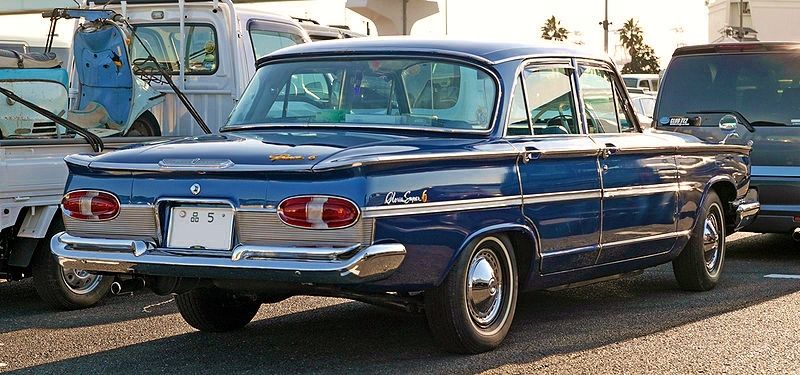frazbroon wrote:Heres my new ride anyone seen one like it in NZ? Anyone got one?
great ride I use to have the previous generation (Prince before Nissan bought it) S40 when I got my license back in '87 well engineered and pretty tuff, just have a read and compare to the dowdy offerings from ford and holden back in the 60's..wish I still had it

Launched with the old four until a new single-overhead-cam six could complete the package in 1963, the Gloria shocked the world at the Japanese industry’s progress. The new G7 six boosted output by 25 percent, delivering 106hp (79kW) from just 1998cc. This was significantly higher than the Mark III Zephyr achieved on 2.6-litres (which the Gloria undercut on price) and ahead of Holden’s bold new 149ci/2.4-litre ‘red’ engine, but under its 179ci/2.9-litre.
The G7 had a cast-iron block with wet-sleeve cylinder liners, cast-iron head and an alternator. Inspired by Mercedes-Benz, it was a mirror image of the German engine with its two-barrel Nikki carburettor and exhaust manifold on the passenger’s side like a Holden, in deference to right-hand drive. The elaborate air filter design that moved its intake into the cold air flow and a modern under-bonnet fan-boosted heater system were typical of the detail.
The impressive ZF-type four-speed manual transmission, with a column-shift pattern similar to the early Peugeot 404, was no less impressive, with an overdrive fourth ratio similar to a VW Beetle’s. Although all Gloria ’boxes contained the extra gear, you had to pay for the overdrive option to access it! The differential was solidly attached to the chassis with enough rubber bushing to warrant a two-piece, centre-bearing tailshaft. Prince was smart enough to replace the sometimes scary Benz swing axles with double-jointed half-shafts and sliding splines. The Gloria’s de Dion tube, attached to unusually long leaf springs, kept the wheels perpendicular to the road. Why Wheels, in March 1965, described the Gloria as having "swing axles" is puzzling. Was it ignorance or too confronting that the Japanese were almost using global best practice as early as 1963.. I think the latter
Launched with the old four until a new single-overhead-cam six could complete the package in 1963, the Gloria shocked the world at the Japanese industry’s progress. The new G7 six boosted output by 25 percent, delivering 106hp (79kW) from just 1998cc. This was significantly higher than the Mark III Zephyr achieved on 2.6-litres (which the Gloria undercut on price) and ahead of Holden’s bold new 149ci/2.4-litre ‘red’ engine, but under its 179ci/2.9-litre.
The G7 had a cast-iron block with wet-sleeve cylinder liners, cast-iron head and an alternator. Inspired by Mercedes-Benz, it was a mirror image of the German engine with its two-barrel Nikki carburettor and exhaust manifold on the passenger’s side like a Holden, in deference to right-hand drive. The elaborate air filter design that moved its intake into the cold air flow and a modern under-bonnet fan-boosted heater system were typical of the detail.
The impressive ZF-type four-speed manual transmission, with a column-shift pattern similar to the early Peugeot 404, was no less impressive, with an overdrive fourth ratio similar to a VW Beetle’s. Although all Gloria ’boxes contained the extra gear, you had to pay for the overdrive option to access it! The differential was solidly attached to the chassis with enough rubber bushing to warrant a two-piece, centre-bearing tailshaft. Prince was smart enough to replace the sometimes scary Benz swing axles with double-jointed half-shafts and sliding splines. The Gloria’s de Dion tube, attached to unusually long leaf springs, kept the wheels perpendicular to the road. Why Wheels, in March 1965, described the Gloria as having "swing axles" is puzzling. Was it ignorance? or too confronting that the Japanese were almost using global best practice as early as 1963...mmm

